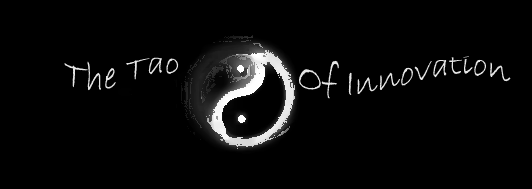Interesting notes on Complexity theory applied to Org behavior. Never thought of it that way, but a system that can both innovate and remain stable must by its nature be at the edge of chaos ... much like my favorite quote "The reasonable man adapts himself to the world. The unreasonable man persists in trying to adapt the world to himself. Therefore all progress depends upon the unreasonable man." G.B. Shaw
"A complex system is one whose component parts interact with sufficient intricacy that they cannot be predicted by standard linear equations; so many variables are at work in the system that its over-all behavior can only be understood as an emergent consequence of the holistic sum of the myriad behaviors embedded within. Reductionism does not work with complex systems, and it is now clear that a purely reductionist approach cannot be applied; …in living systems the whole is more than the sum of its parts. This is the result of… complexity which allows certain behaviors and characteristics to emerge unbidden." (Levy, 1992, pp. 7–8).
"Complex adaptive systems operate in this transition zone between stable equilibrium points and complete randomness. Poised between solidity and precariousness, these regions are typically referred to as the edge of chaos. Neither stability nor chaos is capable of exhibiting the characteristics of complex systems—such behavior can only exist balanced at the edge of chaos. Strange attractors are products of nonlinearity and interactivity. In a sense, falling into attractor patterns produces a constraint on the system behavior; the system of interacting agents loses degrees of freedom in the variety of its activity pattern: “Once the components have entered into this mutual arrangement (attractor), they will tend to ‘stick’ to it, andno longer be able to undergo certain types of relative variation” (Heylighen, 2006, p. 3). In the context of a system of
aggregated agents, constraint equates to correlation in behavior; attractor patterns emerge because agents are less likely to be acting independently but are instead acting more in concert with one another (Marion, 1999; Prigogine, 1997). Ordinary systems overspecify that behavior correlation and reduce the ability to adapt to changes in the conditions they face. Complex adaptive systems provide just enough constraint to allow agents to cooperate, and thus release energy for adaption and create new system properties. Levinthal & Warglien (1999) put it in more familiar terms when they described how this worked within teams: “… cross-functional teams bring together multiple constraints, increase interdependencies in early design phases, and thus make the design landscape more rugged… the variety of functional background of team members makes it likely that different starting points are initially sampled. As a result, a variety of alternative designs is likely to emerge” (p. 348). The appearance of strange attractors and zones of relatively frequent system behaviors shows that while systems may appear on the surface as behaving randomly, those behaviors mask an emergent order that guides agent-based systems to potential new levels of collective behavior." (Boal & Schultz, 2007, pp 413-414)
The views and opinions expressed in this blog are those of the authors and not necessarily those of their employers

No comments:
Post a Comment